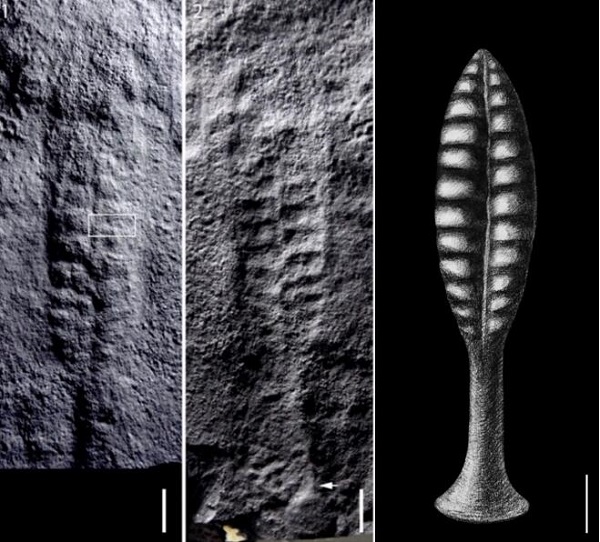
Ediacara-type organisms are an assemblage of macroscopic, soft-bodied eukaryotes that are prosperous in the late Ediacaran (~571–539 Ma). They constitute a unique macroscopic fossil biota prior to the Cambrian explosion - the Ediacara biota, a landmark in the evolution of early macroscopic organisms.
Probably there is nothing as enigmatic as the iconic frondose fossils in the Ediacara biota. A typical frondose fossil consists of an upright leaf-like body (petalodium), a connecting stem, and a basal attachment disc.
In 2014, a type of frondose fossil - Charniodiscus was reported from the Shibantan biota in the Ediacaran Dengying Formation, Yangtze Gorges area, Hubei, China. However, recent studies have revealed that the type species of Charniodiscus is a frondose fossil with fractal branching and multiple petalodia. Hence, it is questionable to place the frondose fossils from the Yangtze Gorges area in Charniodiscus.
Researchers from the Nanjing Institute of Geology and Palaeontology of the Chinese Academy of Sciences (NIGPAS) and Virginia Tech conducted detailed morphological observation, analysis and determination of a major group of frondose fossils from the Shibantan biota. Related results were published in Journal of Paleontology on July 20.
The results showed that the morphological of the frondose fossils from the Yangtze Gorges area were more similar to Arborea which is a bi-petaloid frondose fossil without fractal branching pattern, rather than the type species of Charniodiscus.
The researchers placed these fronds into Arborea. They identified four species of Arborea from the Shibantan biota, including the type species Arborea arborea, Arborea denticulata new species, and two unnamed species, Arborea sp. A and Arborea sp. B.
Biometric and principle component analysis were also conducted, and results showed that Charniodiscus sp. from the Bonavista Peninsula, Newfoundland, Canada is indistinguishable from Arborea arborea. Therefore, they are synonymized.
This research also shows that frondose fossils still have a high diversity even in the latest Ediacaran, providing important evidence for understanding the evolution during the transition between the Ediacaran and Cambrian.
The Shibantan Member in South China and the Khatyspyt Formation in Arctic Siberia represent the only two carbonate successions that are known to host morphologically complex, soft-bodied Ediacara-type macrofossils.
The study was supported by the Chinese Academy of Sciences, the National Natural Science Foundation of China, the Chinese Ministry of Science and Technology, the Science Foundation of Jiangsu Province of China, and the State Key Laboratory of Palaeobiology and Stratigraphy.

Arborea deticulata n. sp. from the Shibantan biota (Image by NIGPAS)

86-10-68597521 (day)
86-10-68597289 (night)

52 Sanlihe Rd., Xicheng District,
Beijing, China (100864)

